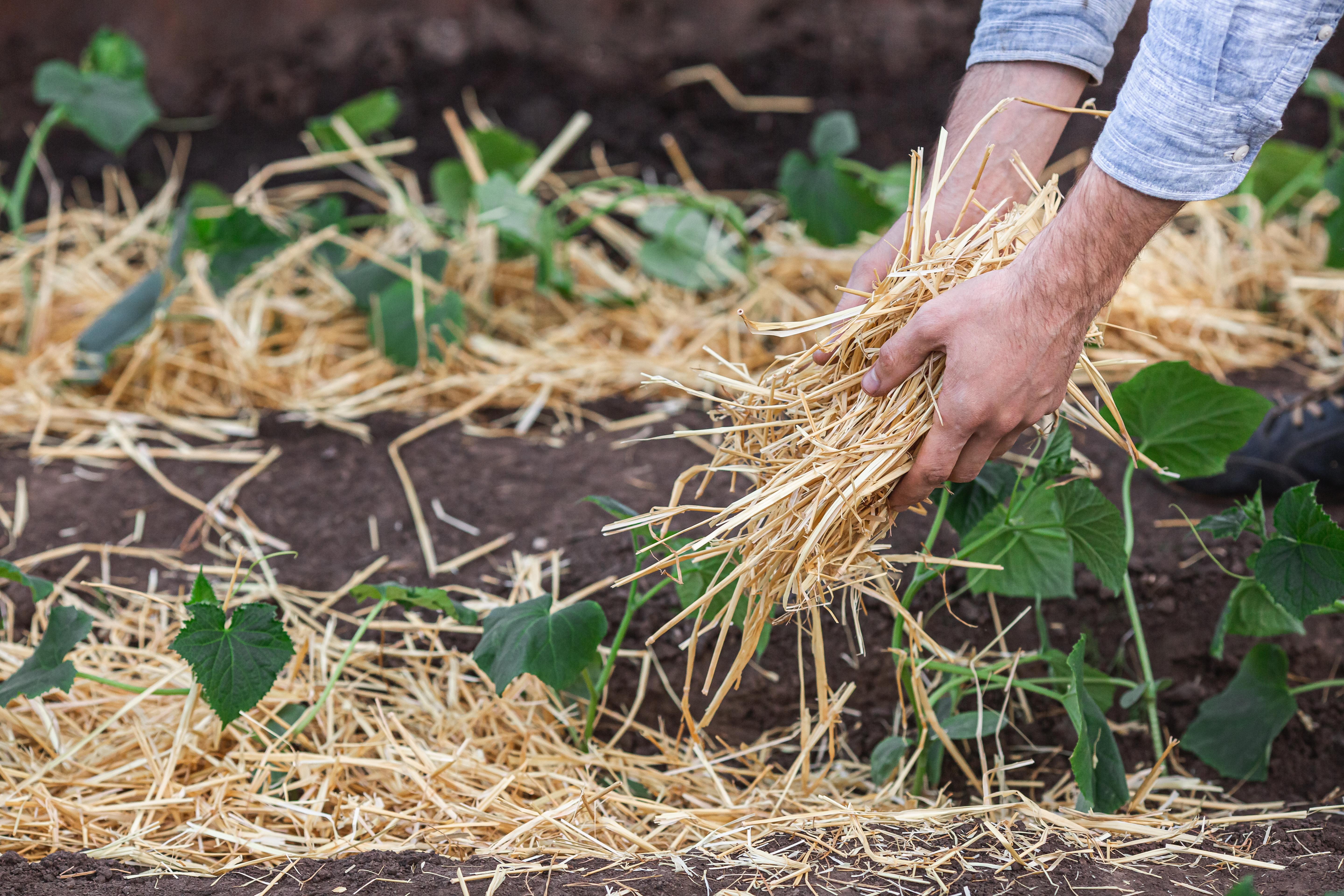Having grown up in the countryside, one of the things I missed most when I lived in the city as a student was the smell of late summer. That warm, cereal-like scent of freshly cut straw was always the signal that the season was shifting. Now that I’ve moved back to the countryside, and even mowed for the very first time myself on a giant John Deere tractor, I can confidently say: the smell of straw is back, folks. My sensory summer is almost complete.
Most of this straw will end up in barns and stables, but it’s also a gardener’s (yes, you!) secret weapon. If you can get your hands on some of this golden, abundantly available goodness, here’s how to put it to work in your garden.
Euh… what is straw, actually?
Straw is the dry, hollow stalk left behind after cereal crops like wheat, rye, barley, or oats are harvested. The farmer takes the nutritious grain at the top, and the rest (the stems) are baled up. Unlike hay, which is cut grass and clover full of seeds and protein for animals, straw is low in nutrients and almost seed-free. That’s exactly why it’s so handy in the garden.
In short, as I used to always mix up hay with straw, hay is for animals and straw is for your garden!
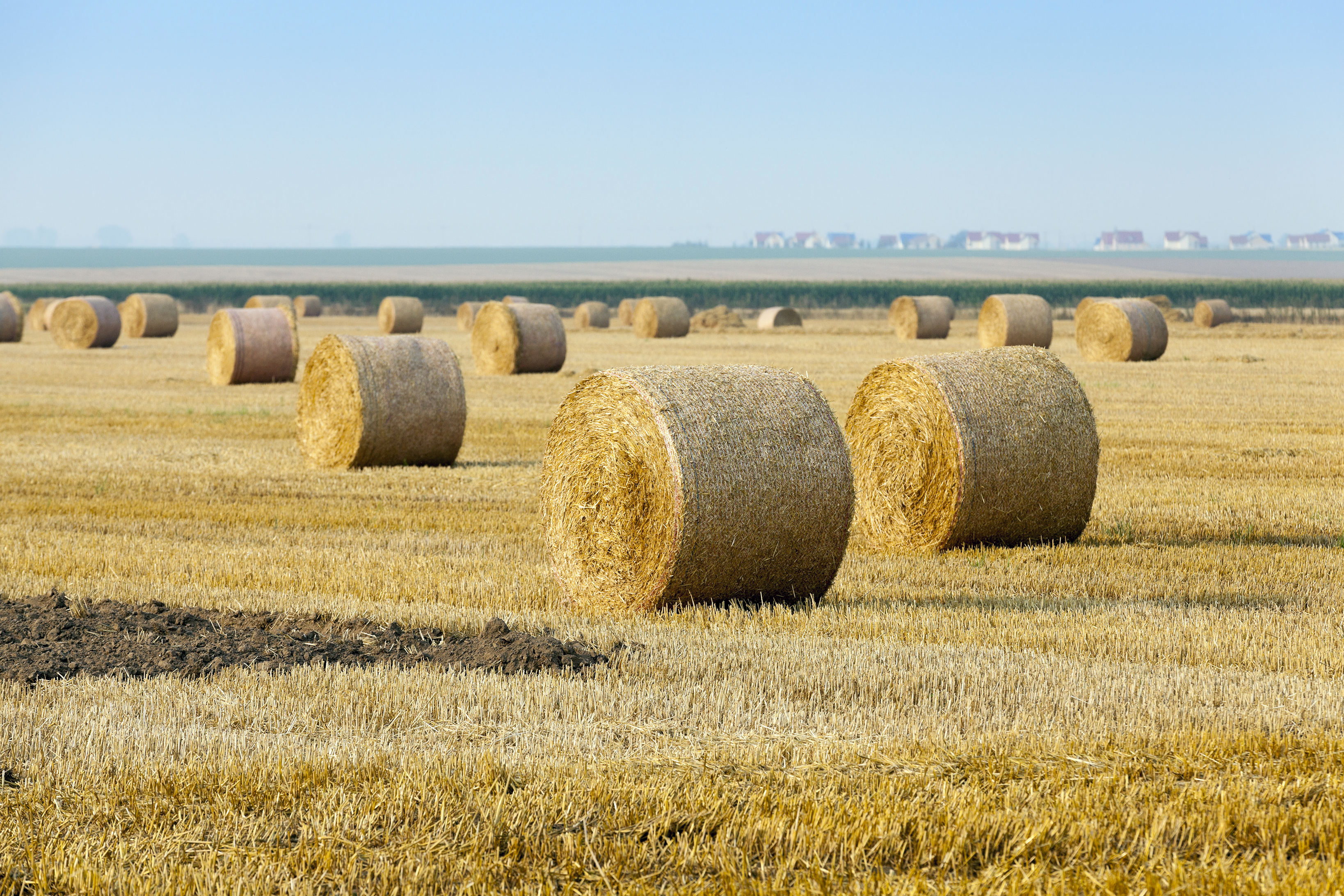
1. Mulch Magic
One of the easiest and most effective ways to use straw in the garden is as mulch. If you’re not familiar with this practice, think of mulch as a light blanket for your soil: a protective layer spread on top that shields and nourishes what’s underneath.
Mulch can be organic (like straw, leaves, wood chips, or compost) or inorganic (like gravel or fabric). Organic mulches are extra valuable because they don’t just protect the soil, they also break down over time, enriching it with nutrients and improving structure.
Want to dive deeper? Check out our dedicated blog post on the topic.
So, straw is a fantastic organic mulch. Here’s how to use it in short: Spread a 5–10 cm layer of straw around your veggie beds, berry bushes, or flower borders. Just remember to keep it a few centimeters away from plant stems to prevent rot.
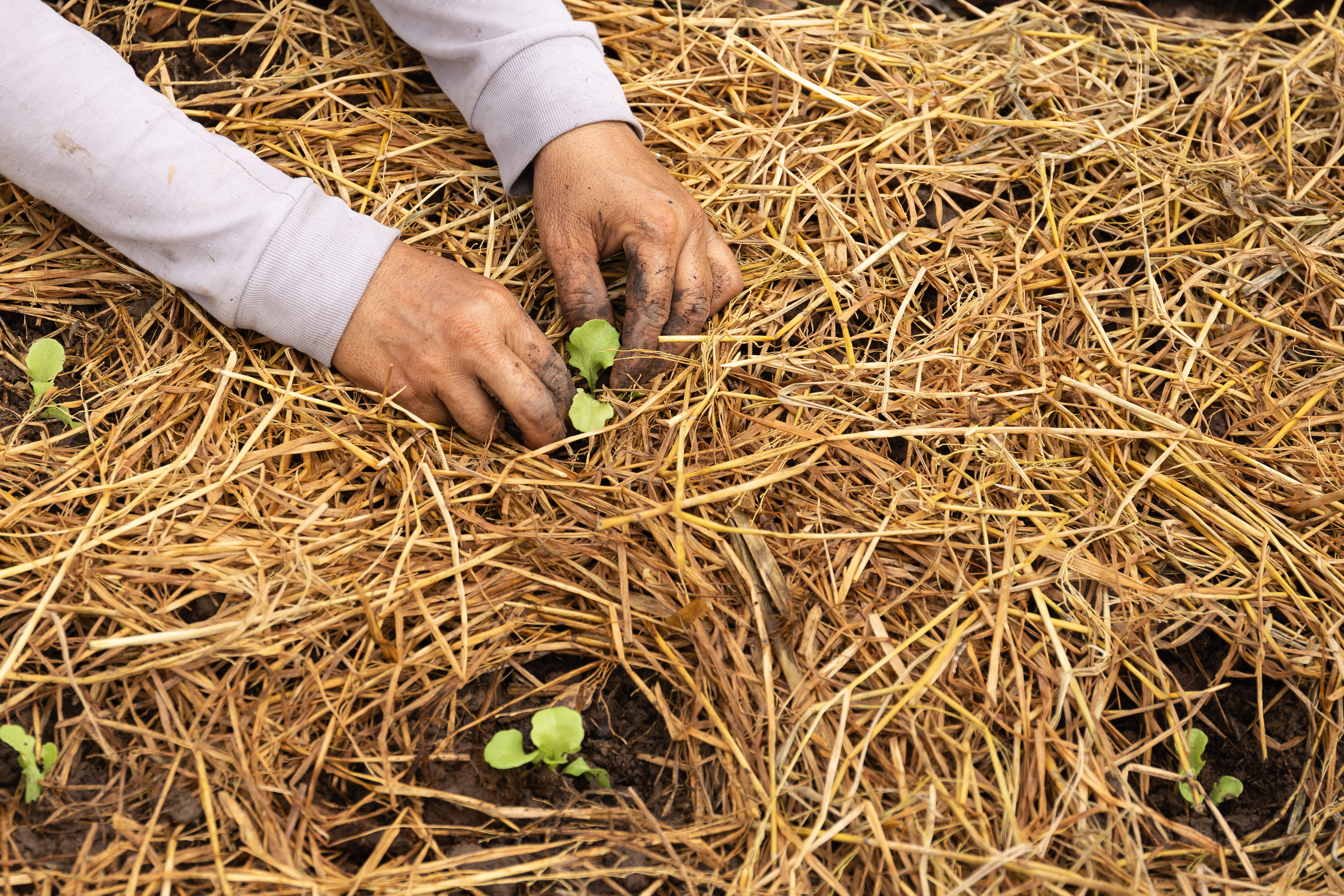
2. Frost Protection
Straw is full of little air pockets (hollow stalks trap air), it works like a natural insulation layer.
Why it matters:
- Temperature buffer! It protects roots from sudden freezes.
- Soil stability! It prevents frost heave (when freezing soil pushes plants out of the ground), which can be heartbreaking for the plant and gardener.
- Extended harvest! It lets you ‘store’ certain root veggies in the soil longer.
how to use it:
- Cover garlic beds right after planting in autumn
- Tuck a layer around perennial herbs like thyme, oregano or chives.
- Heap it over carrots, parsnips, or leeks to keep them harvest ready well into winter.
Whatcha get is snuggly plants, a stable soil and extended harvest! Woohoo!
3. Compost Booster
A healthy compost pile needs both “greens” (nitrogen-rich stuff like kitchen scraps) and “browns” (carbon-rich material). We also did a deep dive on this, check it out here!
Straw is the perfect brown. Adding it will:
- Balance nitrogen-rich waste! Pairs beautifully with veggie peels or fresh clippings.
- Adds structure! Keeps compost airy and prevents foul smells.
- Speeds decomposition! Microbial life thrives when carbon and nitrogen are in balance.
How to use it:
Add a layer of straw every time you add a bucket of ‘greens’. Tear or shred the straw for faster breakdown.
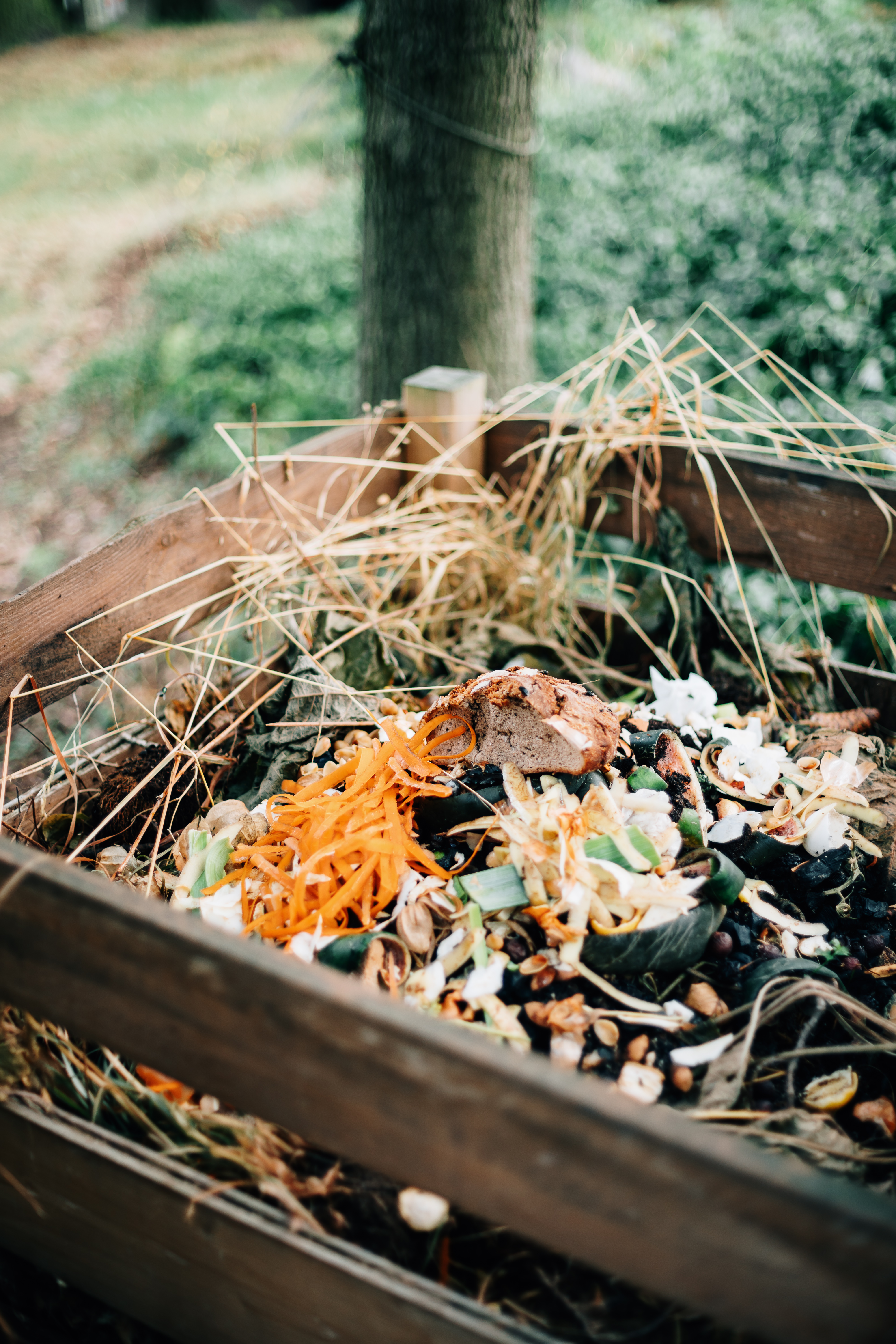
4. Grow Directly in a Straw Bale
For transparency, I haven’t tried this out myself yet. But if you’re feeling experimental, try straw-bale gardening! Kinda like mini raised beds.
Why it works:
As the straw slowly decomposes, it turns into a warm, nutrient-rich medium. Meanwhile, the bale itself provides structure and excellent drainage.
How to do it:
- First condition the bale.Water it thoroughly for around 7-10 days and sprinkle with a nitrogen-rich fertilizer (like diluted compost tea) to kick-start decomposition.
- Once the interior softens, tuck in your desired plants like lettuce, basil or even squash and tomatoes.
- Then it’s up to you to water it regularly and keep an eye on nutrients, I could imagine bales need a little extra feeding.
Joe Gardener has a really great piece on it, explaining everything in detail over here!
5. A Home for Wildlife
Rule 101: no garden without wildlife! Straw can actually serve as a five-star hotel for our fellow garden friends.
Why it matters:
- Shelter. Hedgehogs, frogs and toads hide in straw piles, safe from scary predators.
- Overwintering spot. Ladybirds and beneficial insects use straw to hibernate.
- Natural pest control. Those same creatures help keep slugs, snails and aphids in check (win=win).
How to use it:
Create a loose pile of straw in a quiet garden corner. Combine it with a log pile or stones for extra habitat variety. Samantha actually wrote an amazing piece about planning a wildlife garden, if you’re interested
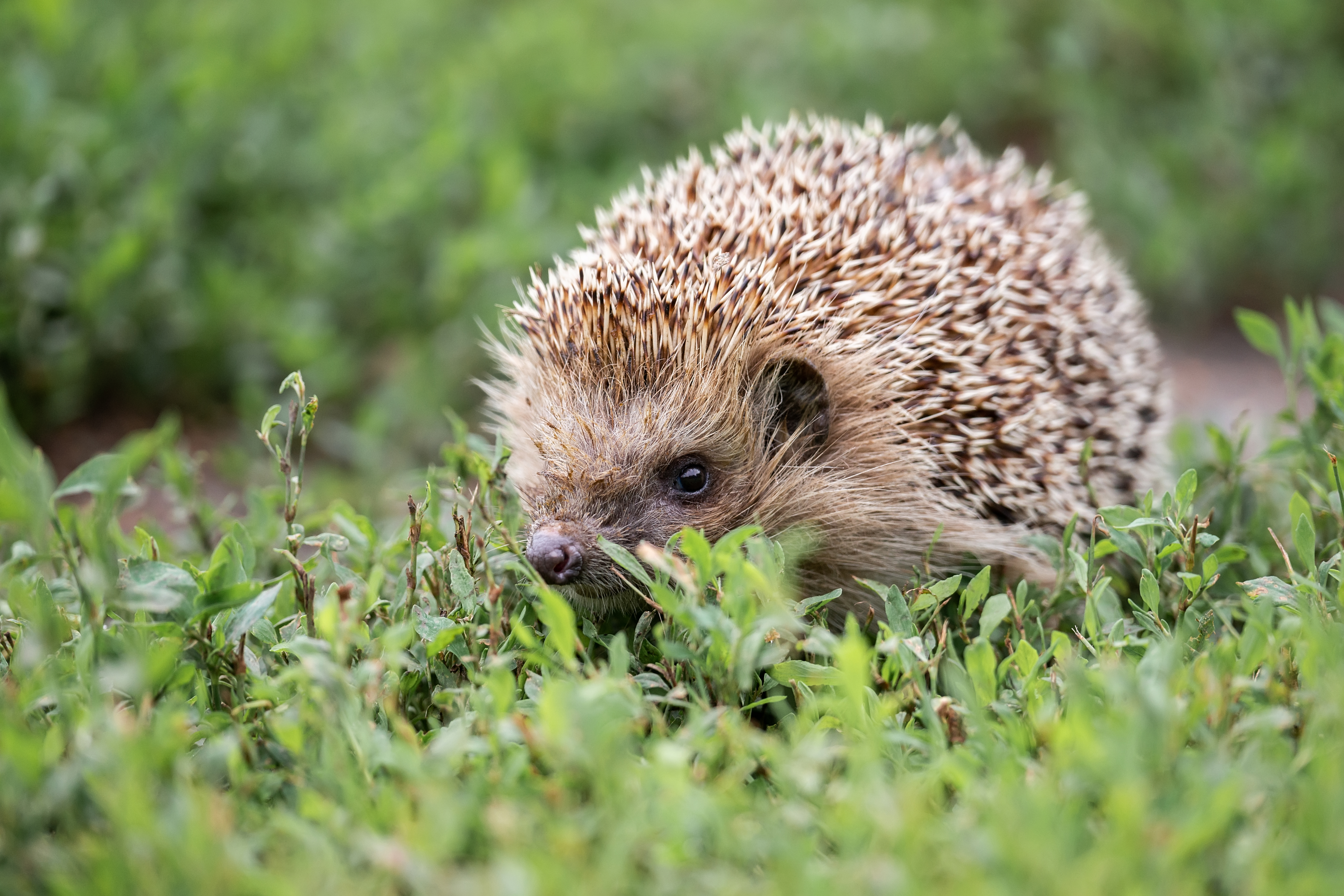
Things to Watch Out For with Straw!
Straw is amazing in the garden, but it’s not completely without quirks. Keep these in mind:
- Not 100% seed-free. Occasionally a stray oat or wheat seed will sprout (easy to pluck out).
- Lightweight. Can blow around in windy spots; water it in or mix with heavier mulch to keep it put.
- Low fertility. Straw adds structure more than nutrients. Balance it with compost or manure for best results.
- Check for chemicals. Some straw is treated with herbicides or pesticides. For veggie beds, go organic if you can, or ask the farmer about its source.
- Moisture trap. In very damp climates, a thick straw layer can harbor slugs or encourage rot. Keep it thinner if your soil stays wet.
None of these are deal-breakers, but knowing them helps you get the best out of your straw without surprises.
Why Late Summer Is The (Straw) Moment
Right now, straw is everywhere. Fields are being cleared, and local farmers often sell bales for just a few euros. Stock up while it’s fresh, dry, and easy to handle. Trust me, come winter, you’ll be glad to have a pile ready for mulching, composting, or frost-proofing your beds.
So next time you pass those giant bales along the roadside, don’t just breathe in that warm, cereal-like smell with a smile. Grab a bale, drag it home (bonus workout), and let straw work its quiet magic in your plot.
Your soil, your plants, and maybe even a hedgehog or two will thank you.
Happy straw-ing!
